Are you wondering when the best time for Annapurna Base Camp Trek is? One of Nepal's most popular trekking areas is the Annapurna Region. More than 100,000 tourists visit the area yearly for a good cause. The mountains look exceptional, the settlement glows culturally, and the region is fully accessible.
Wish to explore more than this? Annapurna Base Camp Trek provides them all. But before that, you might wonder, "When would be the best time to trek Annapurna Region" or "How is Annapurna Base Camp weather like?"
We created this blog to tackle every weather-related query regarding the ABC trek (specifically) and have basic ideas on the Annapurna Region climate. Stay tuned till the end to have wholesome knowledge on this matter. Let's begin!
Introduction to Annapurna Region's Climate
The major highlight of the Annapurna region lies in the hilly gorges and landscapes under the mighty Annapurna and Dhaulagiri range. The whole region is collectively known as Annapurna Conservation Area. It lies northwest of Kathmandu valley and north of Pokhara, ranging from 760m to 8091m (Mount Annapurna).
The lower altitude of the region has lush forests of rhododendrons, orchids, and oak, while the higher altitude is full of temperate & alpine vegetation. Thus, this area is rich in biodiversity, with hundreds of species of rare plants, wild mammals, birds, butterflies, and other flora & fauna.
The region has a range of higher altitudes, so the weather keeps changing. As a result, the temperatures aren't stable. Hence, you need to know the state of weather conditions before going trekking. Even when you're on your way, you can regularly keep track of the weather forecast.
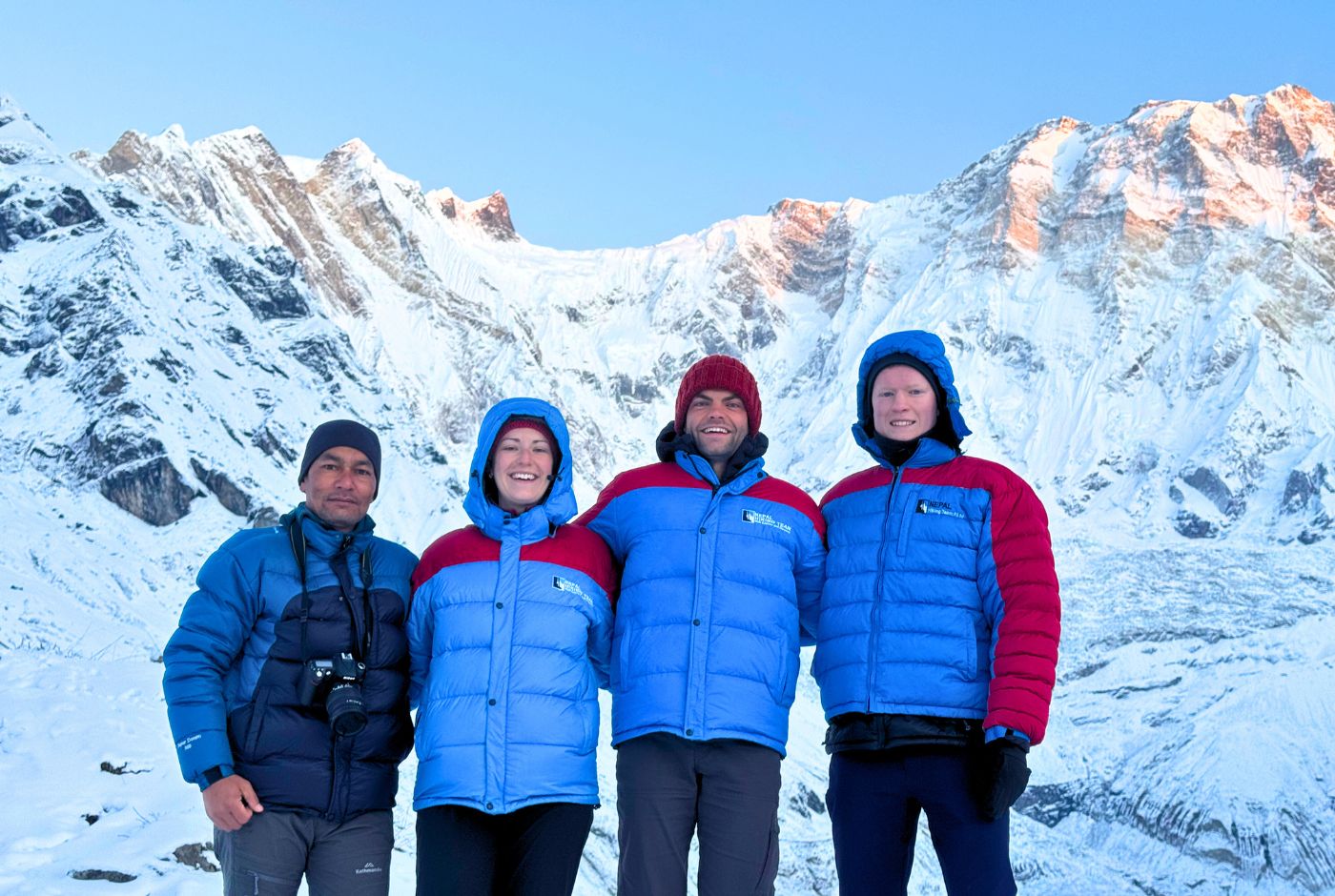
What is the general climate of the Annapurna Region?
Located in the western Himalayas, Annapurna Region sees four different seasons that are the common ones; Summer, Autumn, Winter, and Spring. Each of them has a distinct weather and temperature pattern, but not exactly. You have to expect chilly winds and cold even in summer. The highest daytime temperature here reaches 25 degrees, while at nightime, it can lower to -20 degrees or even less.
Out of all, Spring is one of the best times to visit the Annapurna region. The weather is pleasant, with minimal rainfall and unhindered scenery. Hence, trekking from March to May would be an ideal time when the temperature roughly ranges from 18 degrees to -8 degrees.
In mid-summer, there are heavy rain showers in most areas of Nepal. And so it does in the Annapurna region too. Pokhara, the gateway of Annapurna, is the place in Nepal that bears the maximum rainfall.
But, the best thing is even in that rainy season, some treks are rain shadowed. These trekking areas fall under the rain shadow area of Mt. Annapurna and Mt. Dhaulagiri. These include famous treks like the Upper Mustang Trek, Tilicho Lake Trek and Nar Phu Valley Trek. Some of them are restricted areas, so you might have to follow the prescribed rule. Thus, these places in the Annapurna Trekking area can also be done in the rainy season, as they won't be affected much. Like them, the Annapurna Base Camp trek is somewhat of a safe journey to tour in that season.
Let's discuss the Annapurna Base Camp trek in detail every season. And then, you can choose the season that suits you the most as per your availability & preference.
What is the weather like at Annapurna Base Camp during the spring season?
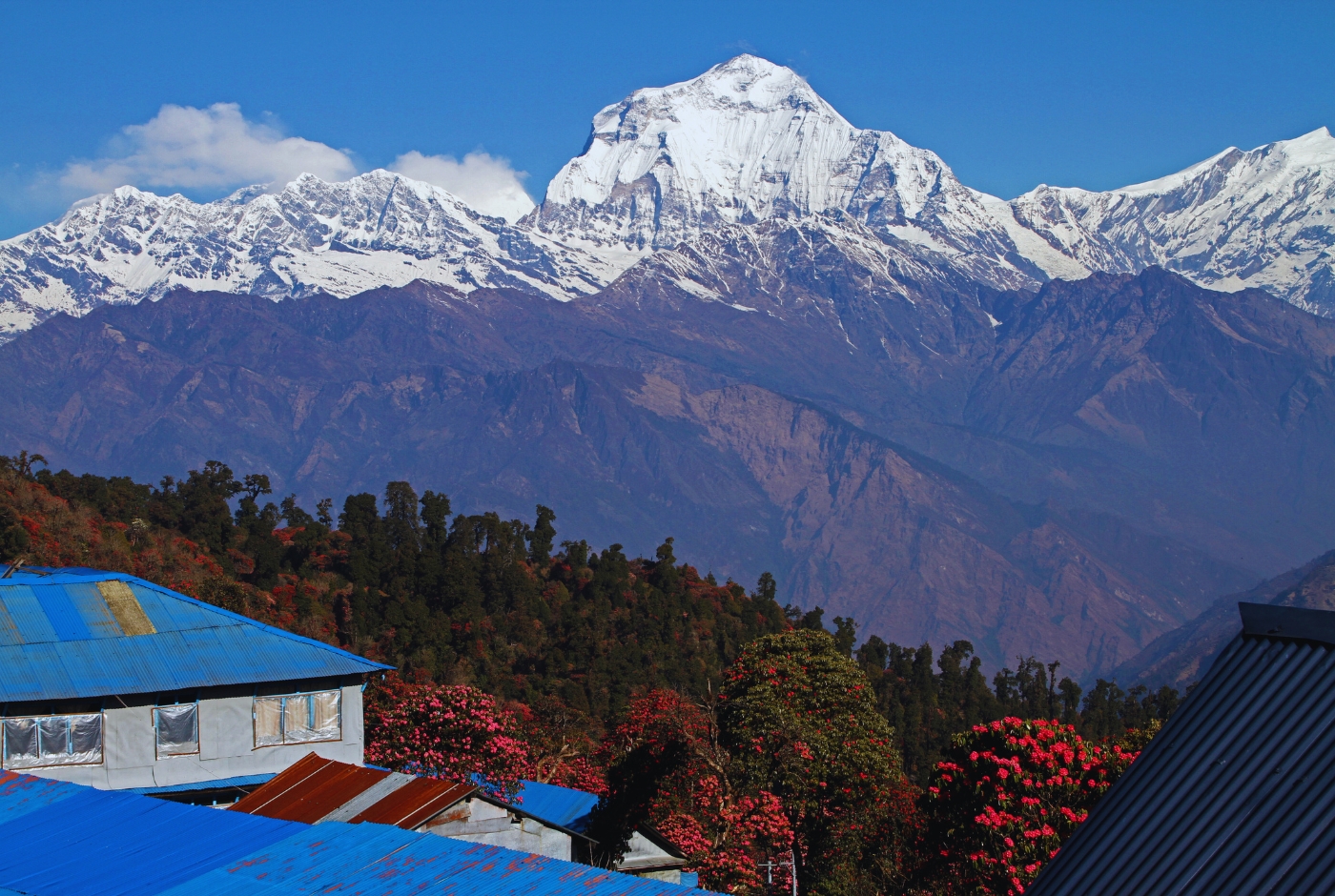
Spring (from March to May) is the best time for the Annapurna Base Camp trek. The weather is neither too hot nor too cold. That is what makes the time so ideal. Plus, you will fall in love with the warm weather and blossoming flowers in the hills. The greatest merits are crystal clear skies, stable climate, and mild temperature.
The time is perfect for viewing apical peaks and mountains as you can witness glistening Annapurna and Dhaulagiri. And you can see clear skies with exotic wildlife & vegetation on the trail, like the colorful rhododendron, spring flowers, and other diverse flora & fauna. Similarly, you can expect green terraced fields and several agricultural lands.
The average temperature of the ABC region in Spring is 17 degrees. It can rise to 20-22 degrees in daytime and can decrease to around 10-5 degrees in mornings & evenings. However, at night, it can further decline to -8 degrees Celsius. The chances of rainfall are minimal; even if it does, it won't be a heavy downpour. In such favorable climatic conditions, you can have good sightseeing. Everything will be dazzling at its best, be it the mountains or cloudless skies, or mild weather.
Even for a solo trekker, it's a fantastic time to be concerned about security and protection. The trails will be full of fellow trekkers, and you can find nearby help with ease. However, you must expect to stay in a local teahouse with essential room services and eateries. You will have to share a bathroom, and other amenities are basic too.
As you go higher, the services might get a little less than before, so be ready for that. With the alluring temperature comes a real crowd on the way. So, it's better to pre-book your accommodation in decent tea houses. For such help and guidance, Nepal Hiking Team will always be there.
What is the weather like at Annapurna Base Camp during the Autumn season?
Autumn in Nepal falls from September to November. Autumn in Annapurna Base Camp is another famous & preferred time to visit. The average temperature drops from 15-17 degrees Celsius. The weather is warm in the daytime and chilly during mornings & evenings. This temperature might go below freezing at night, especially at higher altitudes.
You can experience the fantastic blend of two seasons in autumn. It means you can expect some drips of rain. If you travel in late autumn, you might experience snowfall and a bit more cold. Hence, mid-September would be a more appropriate time for the ABC trek with fewer natural challenges.
The main perk of trekking in autumn is that the view of the mountains is at its best. It's a major attraction during this time. The environment looks pretty and alive. You will love the breezing nature of exotic forests and other fauna. Also, you can't miss the breathtaking sunrise and sunset. Their view from higher Himalayan ranges appears magnificent.
Besides the blissful weather, autumn holds cultural importance based on the Nepalese Calendar. The major Nepalese festivals, Dashain, Tihar, and Indra Jatra, fall this season. Thus, it would be an excellent time for you to experience unique memories. You simply don't want to miss the 'rato tika' in Dashain, the Living Goddess during Indra Jatra, and beaming lightning in Tihar.
What you need to keep in mind is to wear layers as the condition might be arid. The days and nights are colder, so you have to pack your bags likewise. Also, plan and pre-book your places at tea houses early. The autumn season in ABC is the busiest time of the year.
What challenges does Annapurna Base Camp pose in winter?
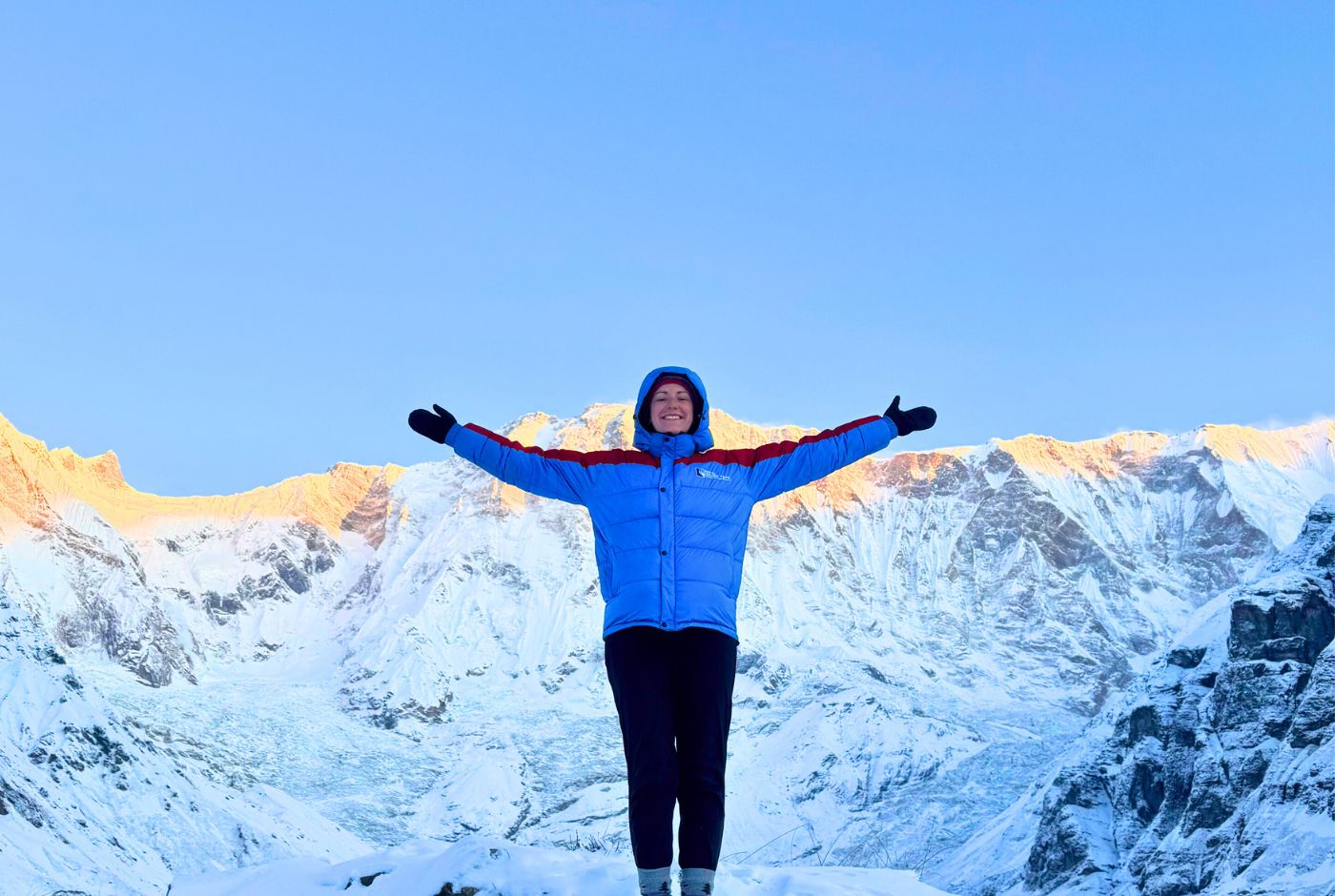
The Winter season in Nepal lasts from December to February. The temperature and weather are the coldest of all. The temperature can go below freezing point. The days can be warm if sunny. Else, it will be cold & damp with frequent snowfall. The temperature around the daytime is 9-12 degree Celsius. At the same time, it may drop to -15 to -20 degrees in the mornings and nights.
Thus, trekking in winter is challenging, but it's equally adventurous. Having said that, yes, the Annapurna Base Camp trek is possible in winter. But you must take the best measures to stay warm and safe. You need to check on the temperature condition regularly.
If you can overcome these physical challenges, you will have the most beautiful experience! You get the benefits of facing fewer crowds and the best accommodation at a feasible rate. Plus, there is little to no chance of rain. Hence, we suggest following the constant weather updates and planning likewise. February is the coldest of all the months, so better to plan for early December to January.
Besides the hefty discount, the winter season brings the breezy & unexplored side of Annapurna Base Camp. The whole area is covered with snow, and the view of the mountains is unhindered. You must be wary of heavy snowfalls and cold weather and pack your bags accordingly. You might have to wear extra layers or even need crampons with your shoes.
What are the conditions like at Annapurna Base Camp during the summer or monsoon season?
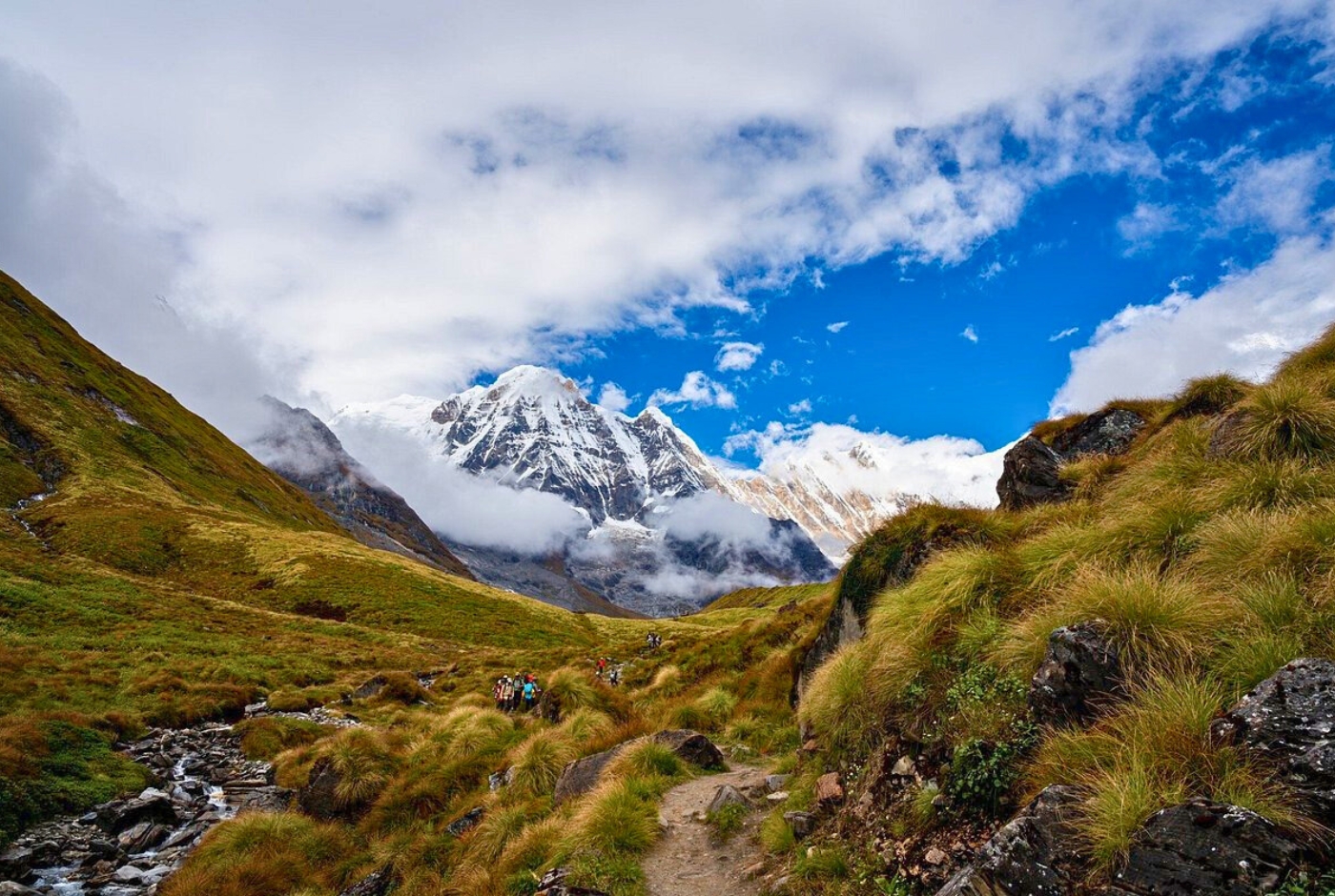
To enjoy the warm summer in Nepal, you need to come from June to August. This is the time when there is constant sun and frequent rainfall. Because of the unfavorable situation, it's off-season for trekkers.
The daytime temperature is from 18-25 degree Celsius on average. The weather may get harsh if heavy rainfall hits. There are high chances of landslides and floods. Plus, the views are all obstructed around. Hence, it's not a great time for beginners or those afraid of leeches because they are about everywhere.
However, this season is the best time for zoologists and botanists. There is a wild variety of flora and fauna observable then. Another benefit is you get the food & accommodation at a minimum rate. And you get to enjoy the whole area by yourself as there is less crowd.
But you can plan to Annapurn Sanctuary Trek towards the end of summer, like late August. By then, the heavy rainfall shall stop and can give you a delightful experience.
To Sum Up
You can go for the Annapurna Base Camp Trek any time of the year. You can face several challenges in every phase, but with better preparation and information, it'd be easy to tackle them. When you reach Annapurna Base Camp at 4130, the mesmerizing view of Dhaulagiri and Machhapuchhre will dazzle you. The whole journey gets unique with every beautiful thing you see on your way. Hence, whether you travel when dry or wet, what matters is that this journey of yours will be unforgettable and the happiest.
So choose your time and plan a schedule for your next adventure. We, the Nepal Hiking team, will always be there to guide and answer your travel-related queries. You can get in touch us via any medium.
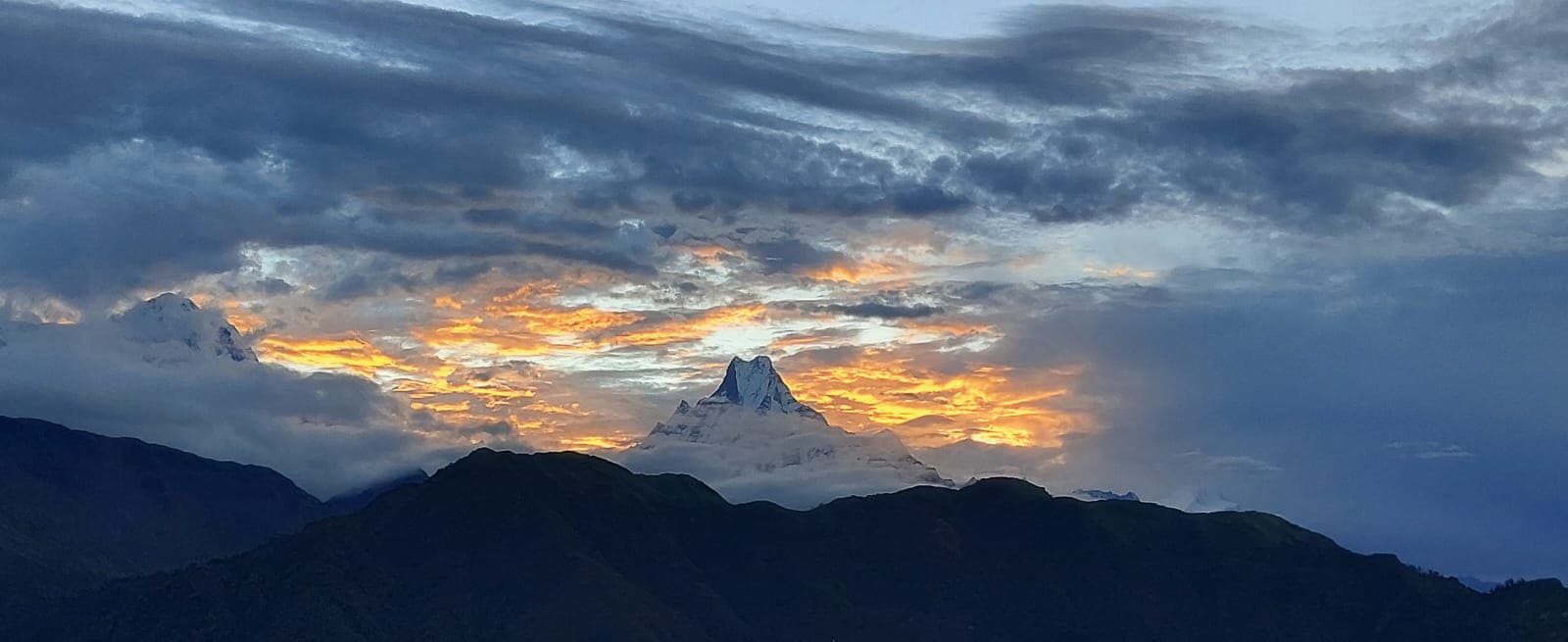


Post a Comment